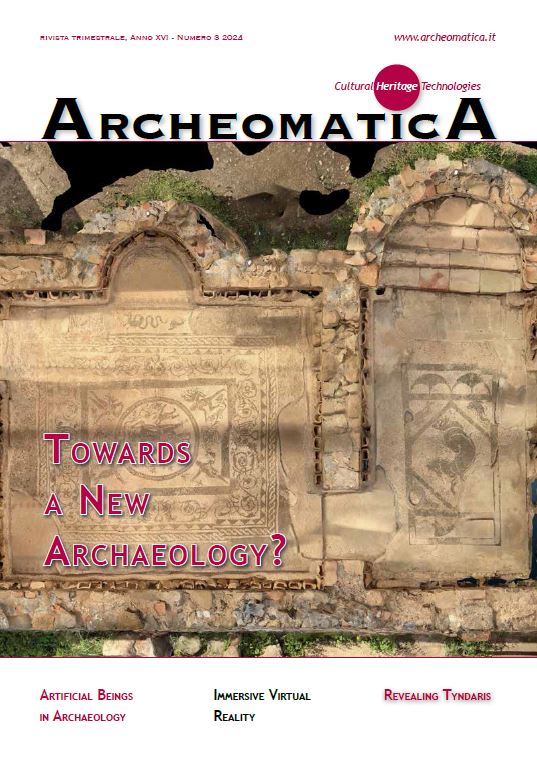Thermography for the conservation of historical art ifacts: the case of the Chinese Buddha in an underground environment
Parole chiave:
termography, diagnostic, conservation, technologies, heritageAbstract
Thermography is the ideal choice for protecting
historical treasures. Using this
technique, we are able to identify imperfections
that can damage our artifacts,
such as water infiltration or mold, invisible
to the naked eye. This technology is
increasingly widespread as a preventive
maintenance method for cultural and artistic
heritage throughout the world.
Thermography is not a measurement of
temperature, but is based on the principles
of thermodynamics: each body is
characterized by its own thermal emission
depending on its surface temperature,
which is in turn conditioned by the
thermal conductivity and specific heat of
each material. In fact, each material has
a different capacity to transmit or retain
heat.
Thermography allows us to investigate
and identify internal problems that are
not visible to the naked eye and is very
useful in various applications for the protection
of artistic and cultural heritage.
##submission.downloads##
Pubblicato
Come citare
Fascicolo
Sezione
Licenza
Gli autori che pubblicano su questa rivista accettano le seguenti condizioni:- Gli autori mantengono i diritti sulla loro opera e cedono alla rivista il diritto di prima pubblicazione dell'opera, contemporaneamente licenziata sotto una Licenza Creative Commons - Attribuzione che permette ad altri di condividere l'opera indicando la paternità intellettuale e la prima pubblicazione su questa rivista.
- Gli autori possono aderire ad altri accordi di licenza non esclusiva per la distribuzione della versione dell'opera pubblicata (es. depositarla in un archivio istituzionale o pubblicarla in una monografia), a patto di indicare che la prima pubblicazione è avvenuta su questa rivista.
- Gli autori possono diffondere la loro opera online (es. in repository istituzionali o nel loro sito web) prima e durante il processo di submission, poiché può portare a scambi produttivi e aumentare le citazioni dell'opera pubblicata (Vedi The Effect of Open Access).





